
The Enchanting Blue Lagoon National Park: Zambia's Hidden Gem
Discover the untouched beauty of Blue Lagoon National Park in Zambia, where diverse wildlife and stunning landscapes create a paradise for nature lovers and adventurers.
Blue Lagoon National Park, located in the Kafue Flats of Zambia, is a pristine sanctuary teeming with wildlife and breathtaking landscapes. The park's centerpiece is the stunning blue lagoon, which transforms into a sprawling lake during the rainy season, attracting an array of bird species and aquatic life. Nature enthusiasts will be captivated by the park's diverse habitats, from vast grasslands to lush woodlands. The park is home to an impressive variety of wildlife, including antelopes, zebras, wildebeests, and the elusive sitatunga. Bird watchers will be thrilled by the sight of thousands of migratory birds, making it a paradise for ornithologists. The park's serene environment offers a perfect escape from the hustle and bustle of city life. Visitors can enjoy peaceful game drives, guided walks, and boat rides, immersing themselves in the natural beauty of the park. Whether you're an avid photographer, a wildlife lover, or simply seeking tranquility, Blue Lagoon National Park promises an unforgettable experience.
Local tips in Blue Lagoon National Park
- Visit during the dry season (May to November) for the best wildlife viewing opportunities.
- Bring binoculars for bird watching; the park is known for its rich avian diversity.
- Hire a local guide to enhance your experience and learn more about the park's flora and fauna.
- Pack insect repellent and sun protection, as you'll be spending a lot of time outdoors.
- Stay hydrated and carry sufficient water, especially during game drives and walks.
The Enchanting Blue Lagoon National Park: Zambia's Hidden Gem
Blue Lagoon National Park, located in the Kafue Flats of Zambia, is a pristine sanctuary teeming with wildlife and breathtaking landscapes. The park's centerpiece is the stunning blue lagoon, which transforms into a sprawling lake during the rainy season, attracting an array of bird species and aquatic life. Nature enthusiasts will be captivated by the park's diverse habitats, from vast grasslands to lush woodlands. The park is home to an impressive variety of wildlife, including antelopes, zebras, wildebeests, and the elusive sitatunga. Bird watchers will be thrilled by the sight of thousands of migratory birds, making it a paradise for ornithologists. The park's serene environment offers a perfect escape from the hustle and bustle of city life. Visitors can enjoy peaceful game drives, guided walks, and boat rides, immersing themselves in the natural beauty of the park. Whether you're an avid photographer, a wildlife lover, or simply seeking tranquility, Blue Lagoon National Park promises an unforgettable experience.
When is the best time to go to Blue Lagoon National Park?
Iconic landmarks you can’t miss
Munda Wanga Environmental Park
Explore the serene beauty and diverse wildlife of Munda Wanga Environmental Park, a perfect escape for nature lovers and families visiting Zambia.

Kalimba Reptile Park
Experience the fascinating world of reptiles at Kalimba Reptile Park, a captivating wildlife refuge in Lusaka, Zambia, perfect for families and nature lovers.

Lower Zambezi National Park
Discover the wild heart of Zambia at Lower Zambezi National Park, a paradise for wildlife lovers and adventure seekers.

Kafue National Park
Experience the breathtaking wilderness of Kafue National Park, Zambia's largest national park, teeming with diverse wildlife and stunning landscapes.

South Luangwa National Park
Discover the wild heart of Zambia at South Luangwa National Park, a sanctuary for wildlife enthusiasts and nature lovers alike.

Mosi-oa-Tunya National Park
Discover the breathtaking landscapes and rich wildlife of Mosi-oa-Tunya National Park, home to the majestic Victoria Falls.

Lusaka National Park
Discover the beauty of Zambia's wildlife at Lusaka National Park, a must-visit destination for nature lovers and adventure seekers.

Kapishya Hot Springs
Experience the tranquility of Kapishya Hot Springs, a natural oasis in Zambia, where relaxation meets adventure amidst stunning landscapes.

Flatdogs Camp
Experience the wild beauty of Zambia at Flatdogs Camp, your gateway to unforgettable safaris and stunning wildlife encounters.

Lumangwe Falls
Experience the breathtaking beauty of Lumangwe Falls, a serene oasis nestled in the heart of Zambia's lush landscapes, perfect for nature lovers and adventurers.

The Big Tree National Monument
Explore the natural beauty and historical significance of The Big Tree National Monument in Kabwe, Zambia, a must-visit attraction for all travelers.

Mokřady Bangweulu
Explore Mokrády Bangweulu, Zambia's stunning wetland paradise, rich in wildlife and natural beauty, perfect for nature lovers and adventurers.
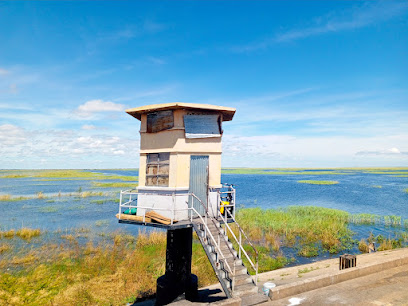
Liuwa Plain National Park
Discover the wild heart of Zambia at Liuwa Plain National Park, where breathtaking landscapes and vibrant wildlife await your exploration.

Kasanka National Park
Explore the breathtaking landscapes and diverse wildlife of Kasanka National Park, a hidden gem in Zambia's natural beauty.

Sanctuary Sussi & Chuma
Discover the enchanting beauty of Mosi-oa-Tunya National Park at Sanctuary Sussi & Chuma, where luxury meets the wild in Zambia.

Unmissable attractions to see
Monkey Pools
Explore the serene beauty of Monkey Pools in Lusaka, a perfect escape with crystal-clear waters and lush surroundings for nature lovers.

Freedom Statue
Discover the Freedom Statue in Lusaka, a powerful symbol of Zambia's independence surrounded by lush gardens and rich historical context.
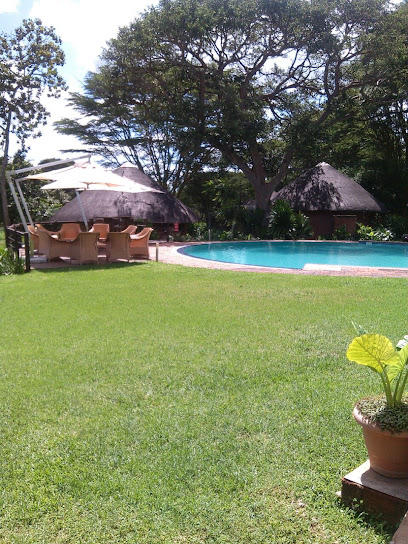
Twangale Water Park
Discover the ultimate fun at Twangale Water Park in Lusaka—where adventure, relaxation, and delicious dining meet in a vibrant setting.

National Heritage Conservation Commission HQ
Discover the rich heritage of Zambia at the National Heritage Conservation Commission HQ in Lusaka, where history and culture come alive.

Cross Park Lusaka
Explore Cross Park Lusaka, a serene retreat in Zambia's capital, offering beautiful landscapes, vibrant flora, and a peaceful ambiance for all visitors.

Munda Wanga Botanical gardens
Explore the beauty of nature at Munda Wanga Botanical Gardens in Lusaka – a tranquil escape filled with diverse flora and wildlife encounters.

Kafue Gorge Power Station
Explore the Kafue Gorge Power Station, a stunning hydroelectric marvel in Zambia, blending engineering excellence with breathtaking natural beauty.

Meanwood Mutumbi Waterfall
Explore the stunning Meanwood Mutumbi Waterfall in Lusaka, a serene natural attraction perfect for relaxation and adventure amidst Zambian beauty.

ngombe Bridge
Explore the scenic Ngombe Bridge in Lusaka, Zambia, where stunning views and tranquility blend to create an unforgettable experience for travelers.

Classic Zambia Safaris
Discover the wild beauty of Zambia at Classic Zambia Safaris, where thrilling adventures and unforgettable wildlife experiences await every traveler.

Mountain ben mwiiga
Discover the breathtaking beauty of Mountain Ben Mwiiga, a must-visit tourist attraction near Mazabuka, Zambia, perfect for adventurers and nature lovers.

Alick Nkhata Bridge
Discover the beauty of Lusaka at Alick Nkhata Bridge, where modern engineering meets natural splendor in Zambia's vibrant capital.

Birdwatching Viewpoint
Explore the natural beauty of Zambia at the Birdwatching Viewpoint, where diverse bird species and serene landscapes create a haven for nature enthusiasts.

Zedverts Zambia Limited Fish and Wildlife Farm
Explore Zedverts Zambia Limited Fish and Wildlife Farm, a premier destination for wildlife conservation and immersive educational experiences in Mwembeshi.
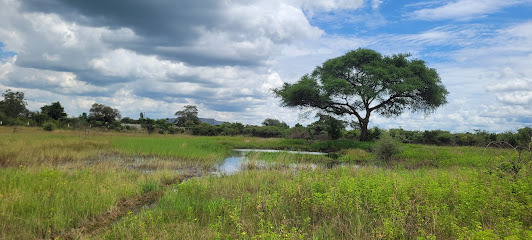
Pa Musebo
Discover the beauty of Kafue at Pa Musebo, a breathtaking hiking area with stunning trails, diverse wildlife, and tranquil landscapes perfect for nature lovers.

Essential places to dine
3 Trees Cafe
Experience Zambian hospitality at 3 Trees Cafe in Lusaka - A culinary gem offering local flavors and international delights.
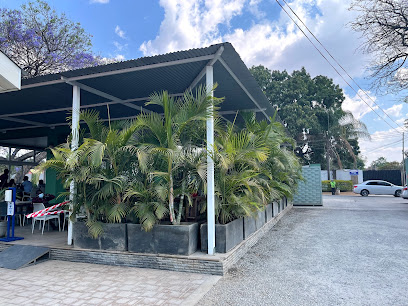
Marlin Restaurant
Experience the best steak dining in Lusaka at Marlin Restaurant – where flavor meets Zambian hospitality.

The Royal Dil
Experience authentic Indian flavors at The Royal Dil in Lusaka - where every dish tells a story.
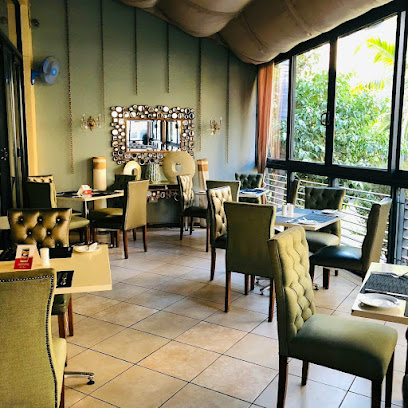
Mint Lounge
Experience exceptional Zambian and international cuisine at Mint Lounge - where flavor meets ambiance in Lusaka.

Dil Restaurant
Experience authentic Indian cuisine at Dil Restaurant in Lusaka—where every dish tells a story.

TWAPANDULA
Experience authentic Zambian flavors at TWAPANDULA in Lusaka—where every grilled bite tells a story.
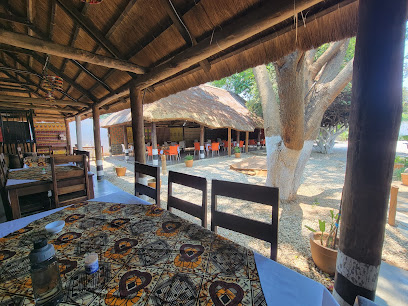
Onoma Mediterranean Restaurant
Experience authentic Mediterranean flavors at Onoma Restaurant in Lusaka – where every meal is a celebration of taste and culture.

Zoran Cafe
Experience authentic Zambian flavors at Zoran Cafe in Lusaka – where every meal is a journey into local cuisine.

Chuma Grill
Experience the essence of Zambian cuisine at Chuma Grill in Lusaka - where every meal tells a story.

Fresco Bar & Cafe
Experience the vibrant flavors of Zambia at Fresco Bar & Cafe in Lusaka - where delicious cuisine meets warm hospitality.

SHAKA'S GRILL
Experience the flavors of Zambia at Shaka's Grill, where every meal is a celebration of local and international cuisine.

The Fat Chef Zambia | EastPark Mall
Experience the rich flavors of Zambian cuisine blended with international favorites at The Fat Chef Zambia in EastPark Mall.

KuMushi Restaurant
Experience authentic Zambian cuisine blended with international flavors at KuMushi Restaurant in Lusaka.
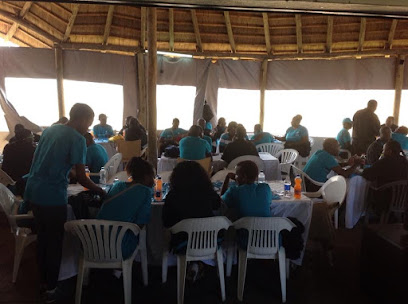
Mabula Restaurant Acacia park
Experience the best of fine dining at Mabula Restaurant Acacia Park in Lusaka - where exquisite flavors meet elegant ambiance.
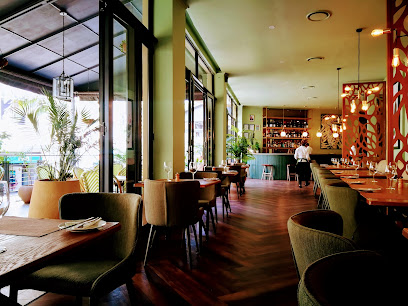
Lilayi Restaurant
Experience authentic Zambian flavors at Lilayi Restaurant in Lusaka—where every dish tells a story.
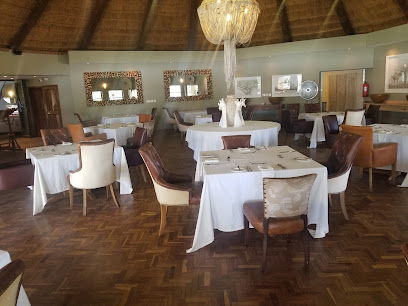
Markets, malls and hidden boutiques
PEP Zambia Mazabuka
Explore the vibrant world of fashion at PEP Zambia Mazabuka, your go-to clothing store for stylish and affordable apparel for the whole family.

Blue Lagoon National Park
Explore the enchanting Blue Lagoon National Park in Zambia, a haven for wildlife enthusiasts and nature lovers alike, filled with breathtaking landscapes and rich biodiversity.

Northend shopping center
Experience shopping like never before at Northend Shopping Center in Mazabuka, where variety meets vibrancy in a welcoming atmosphere.

Mulla's Shopping center
Explore Mulla's Shopping Center in Mumbwa for a comprehensive selection of hardware supplies and local craftsmanship to enhance your projects.

Robert shop
Discover authentic Zambian flavors at Robert Shop, a charming grocery store in Kapyanga offering fresh produce and local delicacies.

The LMS Store
Discover unique fashion finds at The LMS Store in Mazabuka, where quality meets affordability in a delightful shopping atmosphere.

The Big Shop
Explore local flavors and fresh produce at The Big Shop, Mazabuka's premier grocery store for tourists seeking authentic Zambian tastes.

JEMAYA Shops
Discover vibrant clothing and unique fashion finds at JEMAYA Shops in Mazabuka, the perfect destination for style seekers and culture lovers.

Eden Found
Explore the unique home goods and local crafts at Eden Found, a charming store in Mazabuka that celebrates Zambian culture.

PEP Zambia Mumbwa
Explore PEP Zambia Mumbwa for a stylish array of affordable clothing for the whole family, from trendy baby outfits to chic men's and women's apparel.

Uncle k boutique
Discover unique fashion at Uncle K Boutique in Mumbwa, where local designs meet trendy styles for an unforgettable shopping experience.

freshmarket
Experience the vibrant culture of Banachewembwe at Freshmarket, where fresh produce meets local traditions in a bustling atmosphere.

S. S. Shop
Explore local flavors and essentials at S. S. Shop, your friendly grocery store in the heart of Mazabuka, Zambia.

Konkola Hyper Shop
Explore the exquisite selection of home furnishings at Konkola Hyper Shop, where Zambian craftsmanship meets modern design in Mazabuka.
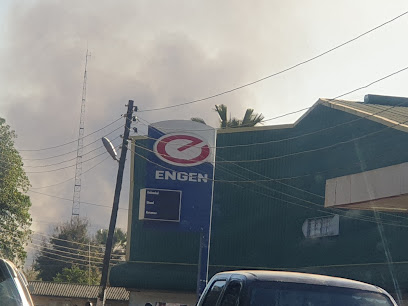
Chochomeza general dealers
Explore the vibrant local culture at Chochomeza General Dealers, a charming general store in Kakombo market, Mumbwa, offering unique Zambian goods.

Essential bars & hidden hideouts
The Well
Discover The Well, a vibrant bar in Zambia perfect for enjoying local drinks, live music, and connecting with fellow travelers.

Abivist pub n grill
Delight in the local flavors and vibrant atmosphere at Abivist Pub n Grill, a bar that embodies the spirit of Mazabuka.

The Garden Grill
Discover the flavors of Zambia at The Garden Grill, where expertly grilled dishes meet a vibrant atmosphere for an unforgettable dining experience.

Corner Bar
Discover the vibrant local nightlife at The Corner Bar in Nangoma, a perfect spot to unwind and enjoy refreshing drinks.

Fridays Corner
Discover the vibrant nightlife at Fridays Corner in Mazabuka, where local culture meets refreshing drinks in a lively bar atmosphere.

Kambondoma Pub N Grill
Discover the vibrant taste of Mumbwa at Kambondoma Pub N Grill, where delicious food, refreshing drinks, and lively entertainment await you.

Jey j's Pub n Grill
Experience the vibrant Zambian nightlife at Jey J's Pub n Grill, where local flavors and a lively atmosphere await every visitor.

The Nook
Experience the vibrant nightlife at The Nook, a stylish bar in Mazabuka offering a diverse drink selection and a cozy atmosphere.

Embassy Bar
Discover the vibrant Embassy Bar in Mazabuka, a lively spot for drinks, music, and a taste of local culture.

CHIKO'S HIDEOUTS PUB
Experience the vibrant nightlife at Chiko's Hideouts Pub in Mazabuka, where local flavors and friendly vibes meet.

New life bar Mumbwa
Experience the vibrant atmosphere of New Life Bar in Mumbwa, where refreshing drinks and live music create unforgettable memories.

Jey J's Pub N GRILL
Discover the lively atmosphere and delicious offerings at Jey J's Pub N Grill in Mumbwa, the perfect spot for food and fun.

Ramblers Pub
Experience the vibrant atmosphere and local charm at Ramblers Pub in Mazabuka, the perfect retreat for thirsty travelers.

Bar
Experience the vibrant local culture at this bar in Mazabuka, where friendly faces and refreshing drinks await in a welcoming atmosphere.

Kachembele bar
Discover the vibrant atmosphere and local flavor at Kachembele Bar in Mazabuka, where hospitality meets refreshing drinks.
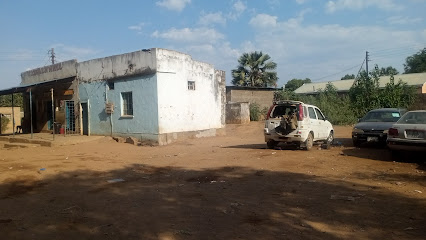
Local Phrases about Blue Lagoon National Park
-
- HelloMuli bwanji
[moo-lee bwan-jee] - GoodbyeKwaheri
[kwa-hair-ee] - YesEe
[ay] - NoAyi
[eye] - Please/You're welcomeChonde
[chon-day] - Thank youZikomo
[zee-koh-moh] - Excuse me/SorryPepani
[peh-pah-nee] - How are you?Muli bwanji?
[moo-lee bwan-jee] - Fine. And you?Ndi bwino. Kaya inu?
[ndee bwee-no. kah-yah ee-noo] - Do you speak English?Mukudziwa chizungu?
[moo-koo-dzee-wah chee-zoon-goo] - I don't understandSindikudziwa
[sin-dee-koo-dzee-wah]
- HelloMuli bwanji
-
- I'd like to see the menu, pleaseNdikufuna kukona menu, chonde
[ndee-koo-foo-nah koo-koh-nah meh-noo, chon-day] - I don't eat meatSindikudya nyama
[sin-dee-koo-dyuh nyah-mah] - Cheers!Tukuka!
[too-koo-kah] - I would like to pay, pleaseNdikufuna kusintha, chonde
[ndee-koo-foo-nah koo-seen-thah, chon-day]
- I'd like to see the menu, pleaseNdikufuna kukona menu, chonde
-
- Help!Chilungamo!
[chee-loon-gah-moh] - Go away!Pita!
[pee-tah] - Call the Police!Pitilizani pamudzi!
[pee-tee-lee-zah-nee pah-moo-dzee] - Call a doctor!Pitilizani daktala!
[pee-tee-lee-zah-nee dahk-tah-lah] - I'm lostNdimadutsidwa
[ndee-mah-doo-tsee-dwah] - I'm illNdimapwala
[ndee-mah-pwah-lah]
- Help!Chilungamo!
-
- I'd like to buy...Ndikufuna kugula...
[ndee-koo-foo-nah koo-goo-lah] - I'm just lookingNdimakhala ndikugulako
[ndee-mah-kah-lah ndee-koo-goo-lah-koh] - How much is it?Ndi malo ndi angati?
[ndee mah-loh ndee ahn-gah-tee] - That's too expensiveIzi ndi ambiri
[ee-zee ndee ahm-bee-ree] - Can you lower the price?Mukhoza kutchuka malo?
[moo-koh-zah kooch-too-kah mah-loh]
- I'd like to buy...Ndikufuna kugula...
-
- What time is it?Ndani nthawi?
[ndah-nee n-tah-wee] - It's one o'clockNdi nthawi imodzi
[ndee n-tah-wee ee-moh-zdee] - Half past (10)Kukula ndi khumi
[koo-koo-lah ndee koo-mee] - MorningUsiku
[oo-see-koo] - AfternoonChaka chino
[chah-kah chee-noh] - EveningMawa
[mah-wah] - YesterdayCha kachiwiri
[chah kah-chee-wee-ree] - TodayLero
[lay-roh] - TomorrowMawa
[mah-wah] - 1Mosi
[moh-see] - 2Ziri
[zee-ree] - 3Tatu
[tah-too] - 4Nai
[nah-ee] - 5Sanu
[sah-noo] - 6Zana
[zah-nah] - 7Nzai
[nzah-ee] - 8Zana
[zah-nah] - 9Iwa
[ee-wah] - 10Khumi
[koo-mee]
- What time is it?Ndani nthawi?
-
- Where's a/the...?Kodi...ali kuti?
[koh-dee ah-lee koo-tee] - What's the address?Adilesi ili kuti?
[ah-dee-leh-see ee-lee koo-tee] - Can you show me (on the map)?Mukhoza kundikonzera (pa mapha)?
[moo-koh-zah koon-dee-kohn-zeh-rah pah mah-phah] - When's the next (bus)?Liti lonyozani (bus)?
[lee-tee loh-nyoh-zah-nee] - A ticket (to ....)Tikiti (ku ....)
[tee-kee-tee koo]
- Where's a/the...?Kodi...ali kuti?
History of Blue Lagoon National Park
-
Blue Lagoon National Park, located in Zambia's Central Province, was officially established in 1976. The park covers an area of approximately 500 square kilometers and is part of the Kafue Flats, a vast wetland ecosystem. Initially, the area was set aside for conservation due to its rich biodiversity and unique floodplain environment.
-
The Blue Lagoon National Park is a critical component of the Kafue Flats, one of the most important wetland ecosystems in Africa. This area is a haven for numerous bird species, including the endangered Wattled Crane and the African Skimmer. The seasonal flooding of the Kafue River creates a dynamic environment that supports a diverse range of flora and fauna, making it an essential location for ecological research and conservation efforts.
-
The Ila people, who have historically inhabited the Kafue Flats region including the area encompassing Blue Lagoon National Park, have a rich cultural heritage. They are known for their traditional fishing methods, cattle herding, and unique ceremonies. The Ila's deep connection with the land and water resources of the Kafue Flats has shaped their way of life and cultural practices for centuries.
-
During the colonial era, the British administration recognized the ecological importance of the Kafue Flats and initiated various conservation measures. Efforts were made to regulate hunting and protect wildlife habitats. These early conservation initiatives laid the groundwork for the later establishment of national parks and protected areas, including Blue Lagoon National Park.
-
In the struggle for Zambia's independence from British colonial rule, the Kafue Flats region, including what is now Blue Lagoon National Park, served as a strategic location for freedom fighters. The dense wetlands and lagoons provided natural cover and resources for those resisting colonial forces, contributing to the broader movement for independence, which was achieved in 1964.
-
In recent decades, Blue Lagoon National Park has faced various conservation challenges, including poaching, habitat degradation, and climate change impacts. However, there have been significant efforts to involve local communities in conservation initiatives. Programs focusing on sustainable tourism, wildlife monitoring, and environmental education aim to preserve the park's natural heritage while providing economic benefits to the surrounding communities.
-
Tourism infrastructure in Blue Lagoon National Park has seen considerable development over the years. The park now boasts several lodges, campsites, and guided tour services that cater to both domestic and international tourists. These developments have been carefully managed to ensure minimal impact on the park's delicate ecosystems while enhancing visitor experience.
Blue Lagoon National Park Essentials
-
Blue Lagoon National Park is located in the Kafue Flats of Zambia. The nearest major city is Lusaka, about 120 kilometers away. From Lusaka, you can take a bus, hire a taxi, or rent a car to reach the park. The journey typically takes around 2 to 3 hours by road. Ensure your vehicle is suitable for off-road conditions, especially during the rainy season.
-
Within the park, the best way to get around is by guided tours, which often include off-road vehicles suitable for the park's terrain. Self-driving is also an option if you have a 4x4 vehicle. There are no public transport options available within the park, so plan accordingly.
-
The official currency in Zambia is the Zambian Kwacha (ZMW). Credit cards are accepted in some lodges and larger establishments, but it is advisable to carry cash for smaller transactions and tips. ATMs are available in Lusaka, but not within the park, so ensure you have sufficient cash before you arrive.
-
Blue Lagoon National Park is generally a safe destination, but standard precautions should be taken. Avoid walking alone at night and always keep an eye on your belongings. Be aware of wildlife and adhere to park regulations to ensure your safety. There are no specific areas with high crime rates targeting tourists within the park, but always stay vigilant.
-
In case of an emergency, contact the park rangers or your accommodation staff immediately. For medical emergencies, the nearest hospital is in Lusaka. It is highly recommended to have travel insurance that covers medical emergencies and evacuation. Always have a charged mobile phone and a list of emergency contacts.
-
Fashion: Do wear comfortable, breathable clothing suitable for safari activities. Avoid bright colors that may attract insects or disturb wildlife. Religion: Do respect local customs and traditions; if visiting nearby villages, dress modestly. Public Transport: Public transport is not available within the park, so plan your transport in advance. Greetings: Do greet people with a handshake and a friendly smile. Eating & Drinking: Do try local cuisine if offered, and always drink bottled water to avoid waterborne illnesses. Don't litter in the park; always use designated disposal areas.
-
To experience Blue Lagoon National Park like a local, consider visiting during the wet season (November to April) to witness the stunning bird migrations. Engage with local guides who can offer in-depth knowledge about the park's flora and fauna. Don't miss the chance to see the Kafue lechwe, an endemic antelope species unique to the area. For a unique experience, participate in a traditional fishing trip with the local community.
Trending Landmarks in Blue Lagoon National Park
-
Munda Wanga Environmental Park
-
Kalimba Reptile Park
-
Lower Zambezi National Park
-
Kafue National Park
-
South Luangwa National Park
-
Mosi-oa-Tunya National Park
-
Lusaka National Park
-
Kapishya Hot Springs
-
Flatdogs Camp
-
Lumangwe Falls
-
The Big Tree National Monument
-
Mokřady Bangweulu
-
Liuwa Plain National Park
-
Kasanka National Park
-
Sanctuary Sussi & Chuma
Nearby Cities to Blue Lagoon National Park
-
Things To Do in Kabwe
-
Things To Do in Kariba
-
Things To Do in Ndola
-
Things To Do in Kitwe
-
Things To Do in Livingstone
-
Things To Do in Victoria Falls
-
Things To Do in Hwange
-
Things To Do in Kasane
-
Things To Do in Chinhoyi
-
Things To Do in Solwezi
-
Things To Do in Katima Mulilo
-
Things To Do in Harare
-
Things To Do in Gweru
-
Things To Do in Chipata
-
Things To Do in Masvingo








